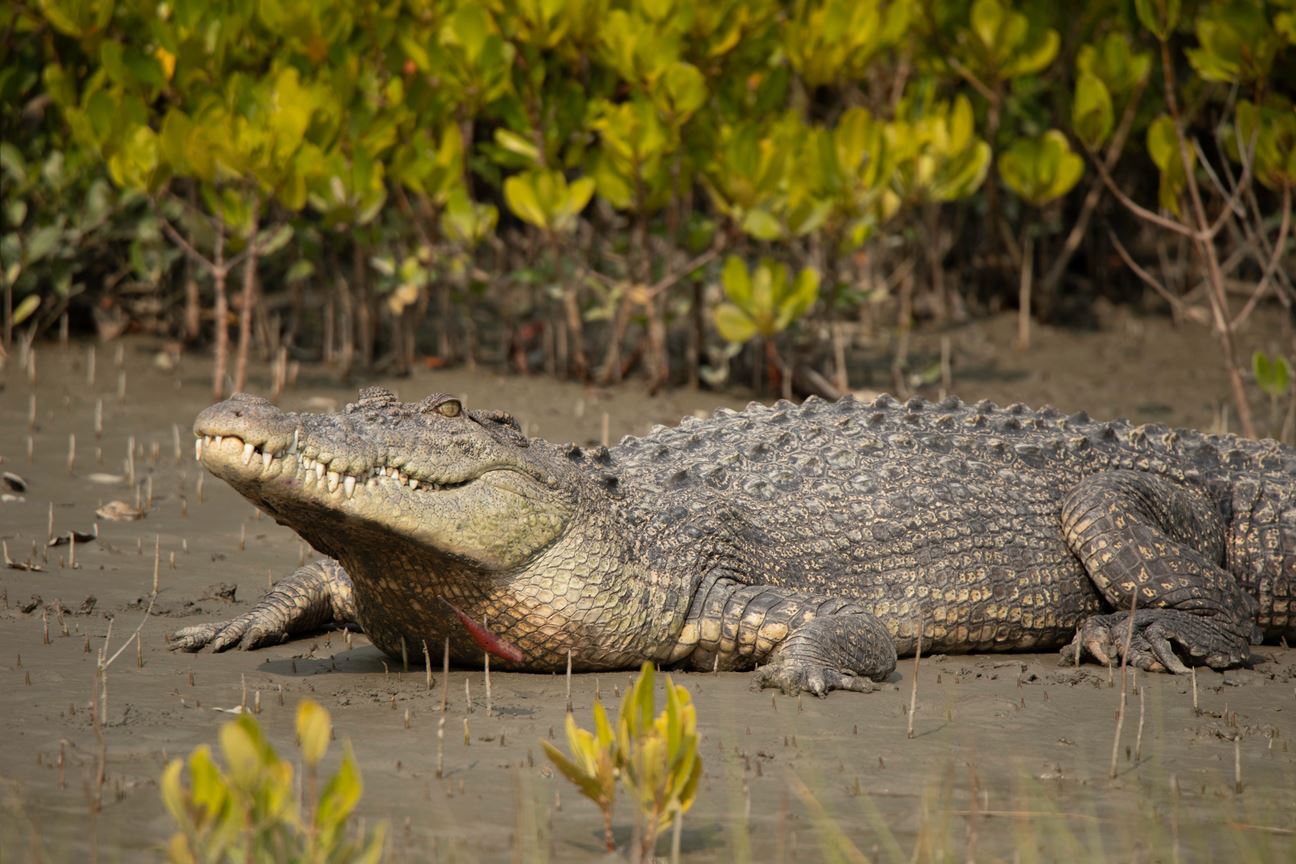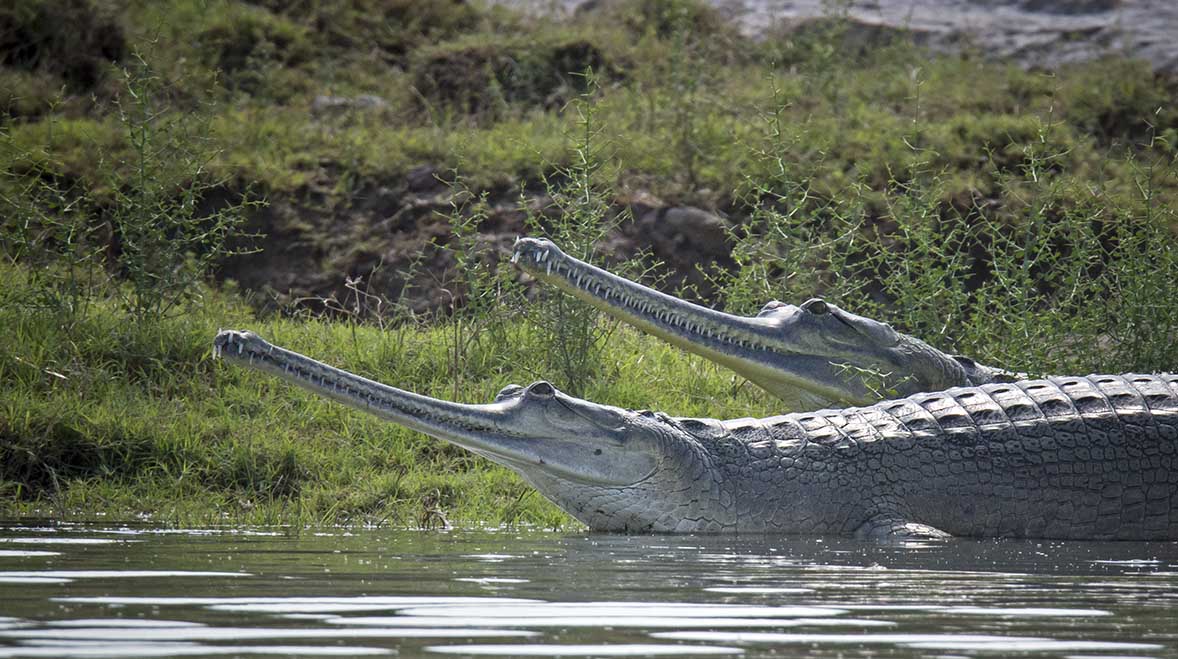While the reptile species is one of taxonomy's broadest, there are two varieties of it that especially have people confused — crocodiles and gharials. Here's how to distinguish between the two.
India has an ancient relationship with these species, with crocodiles and gharials being found on ancient carving and plenty of references in literature. Are there any differences between them? And what about alligators? Do we have those in India?
Let’s start with the term ‘Crocodilians’ which includes three families – the Crocodylidae, Alligatoridae (alligators) and Gavialidae, i.e. the gharials. We don’t have alligators in India.

Fact: Crocodiles Don’t Chew Their Food. (Image Courtesy- sushil kumudini chikane-Shutterstock)
We do have three kinds of crocodiles in India - the mugger crocodile is the most common, followed by the saltwater crocodile (both species are commonly referred to as “crocodiles”) and the gharials.
Confusing? Let’s see some key differences to make things clearer.
Jaw:
This is the most visually distinguishable factor. Crocodiles have broad and wide jaws. They can open their jaws fully and they have powerful teeth that enable them to prey on large animals. When their jaw is closed, crocodiles often look like they are grinning!
Gharials have long and slender jaws. Their jaws don’t open all the way and so they prey on smaller animals. Their jaws are weak in comparison to the jaws of the crocodile; however, they do have razor-sharp teeth - a 110 of them! Crocodiles have much fewer teeth in comparison.
Habitat:
Crocodiles are found in North America, Africa, Asia and Australia. In India, mugger crocodiles are found in almost all parts India while the saltwater crocodiles dwell in the eastern side of the country. Crocodiles inhabit both fresh and saltwater habitats.
Gharials - the rarest amongst the three are only found in India, Bangladesh, Pakistan and some other neighbouring countries. In India, they are found only in some rivers - the Chambal, the Ganga, Yamuna, Kali, Kosi and Gandak.
 Fact: Gharials Are Solitary Animals. (Image Courtesy- sushil kumudini chikane)
Fact: Gharials Are Solitary Animals. (Image Courtesy- sushil kumudini chikane)
Locomotion on land and in water:
Crocodiles can walk on land using their limbs. Gharials use their belly to slide on land and are much slower than crocodiles. However, in water bodies, the gharials are swift swimmers, much faster than crocodiles.
Other physical differences:
Gharials are bigger than freshwater crocodiles but smaller than saltwater crocs. Besides, their snout makes them much longer as well. Gharials, especially the females, have a bulbous structure at the tip of its nose. This structure is absent in crocodiles.
Having stated the difference between the two, it is also worth taking note of the fact that gharials were once thought to be getting extinct. However, their recent spottings are making wildlife experts contemplate whether the species is having a possible comeback.